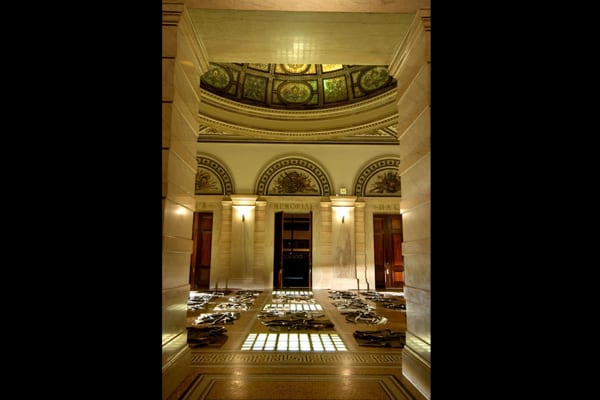
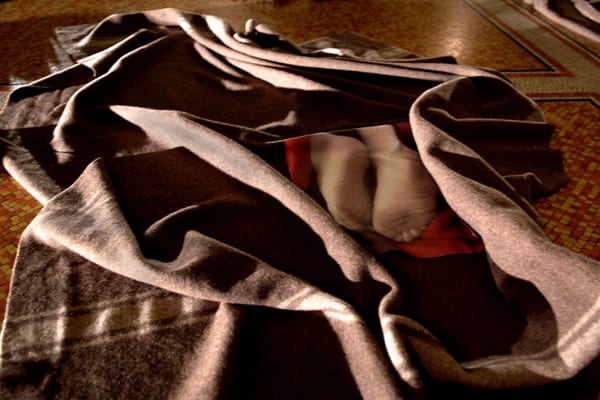

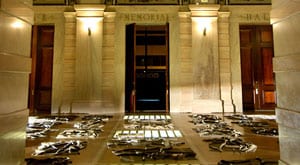
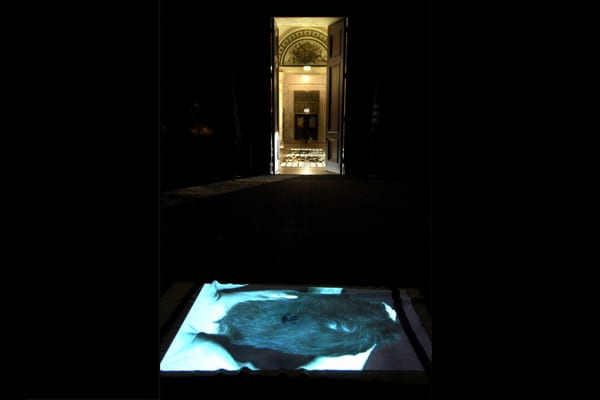
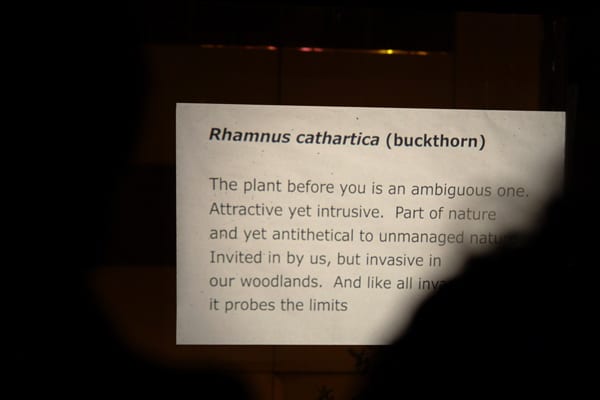
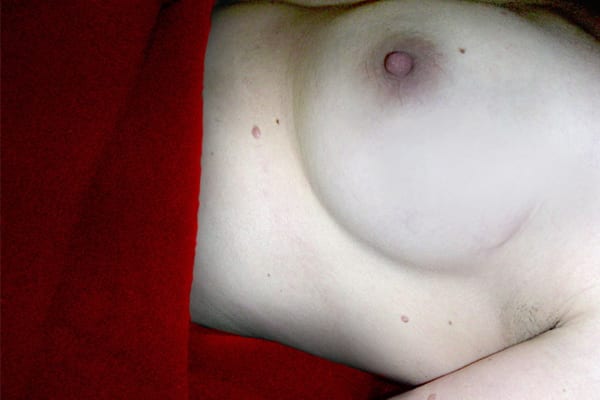
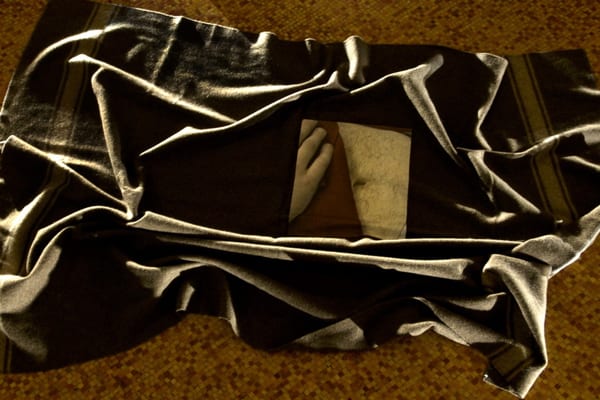

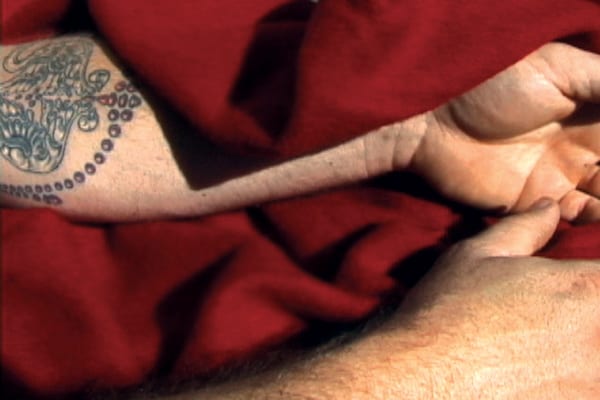
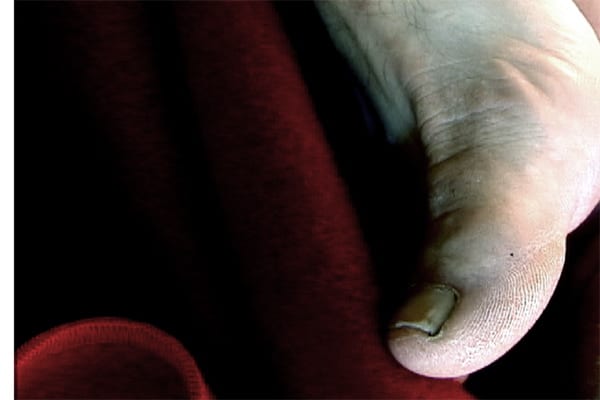
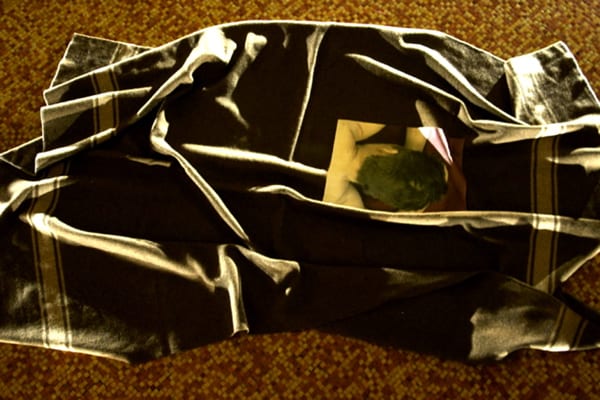
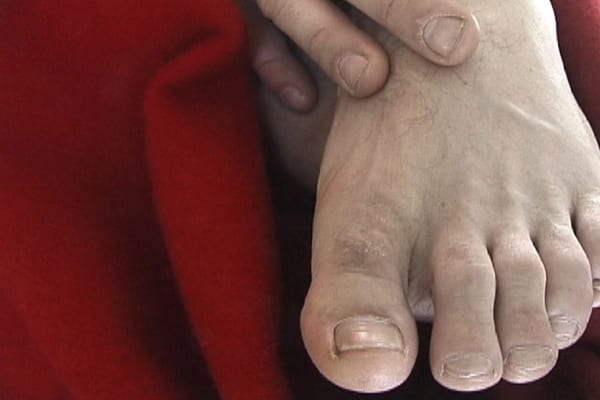
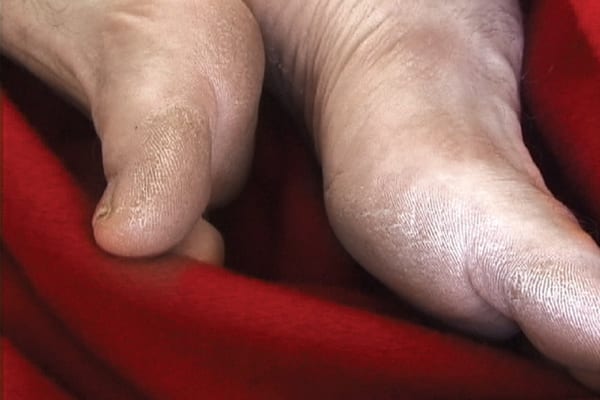
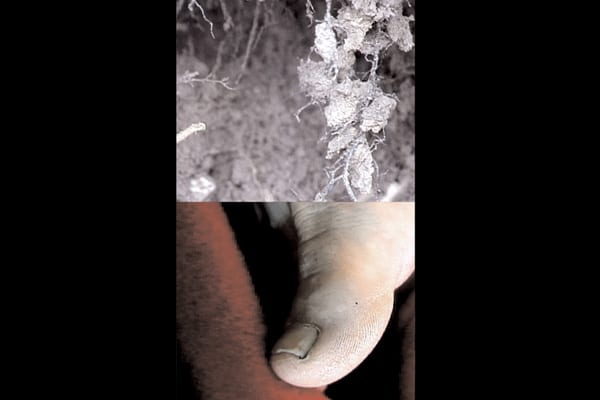
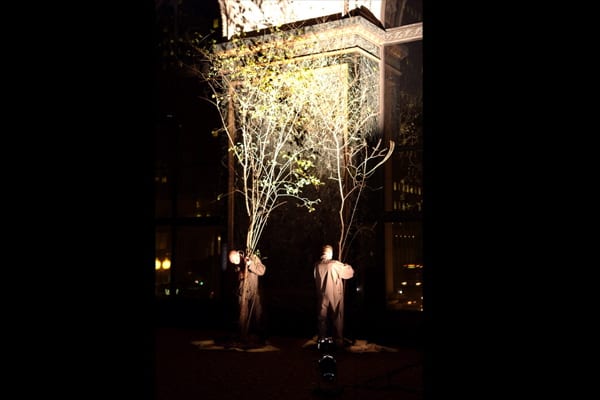
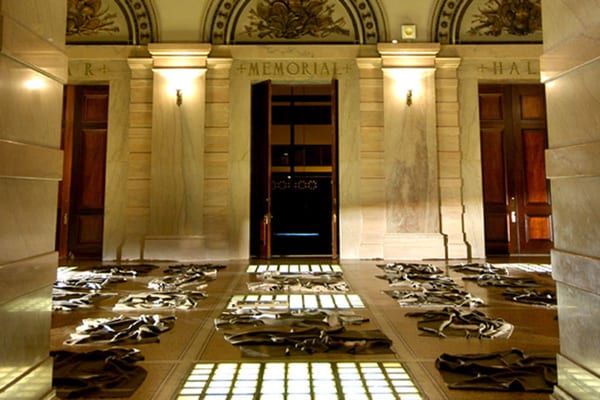
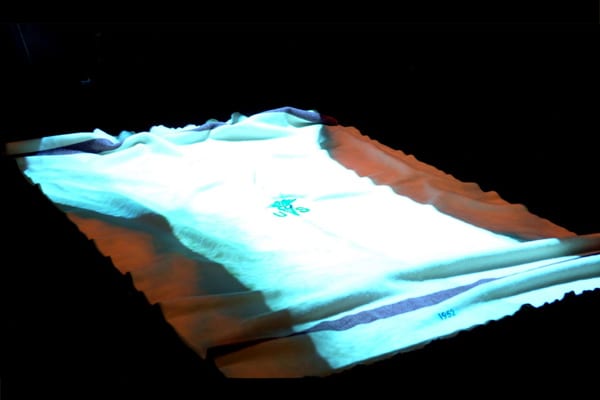
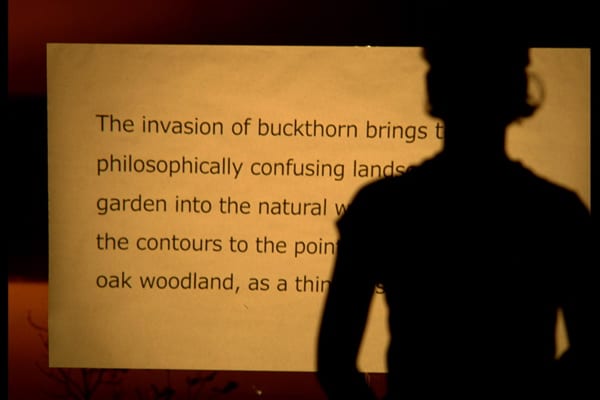
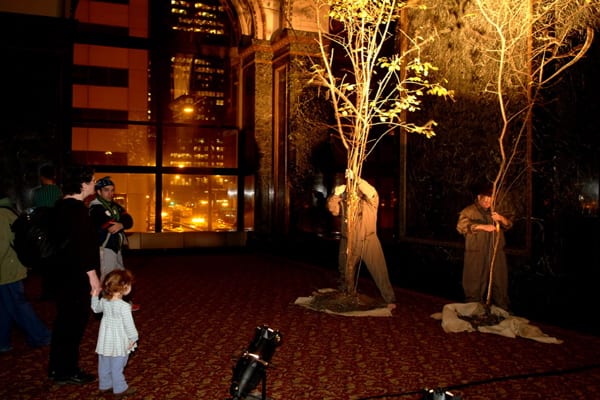
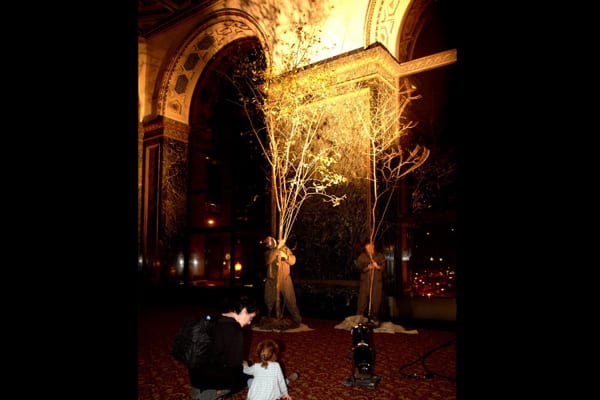
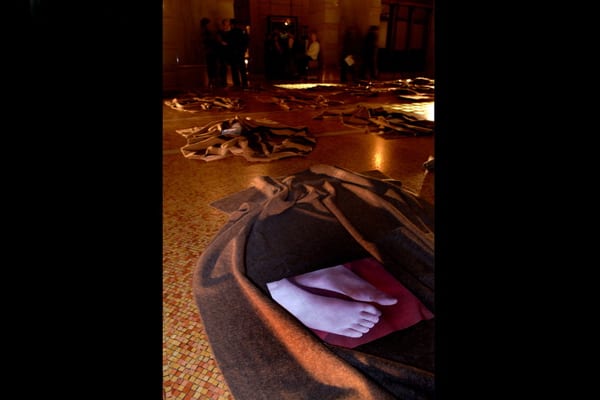
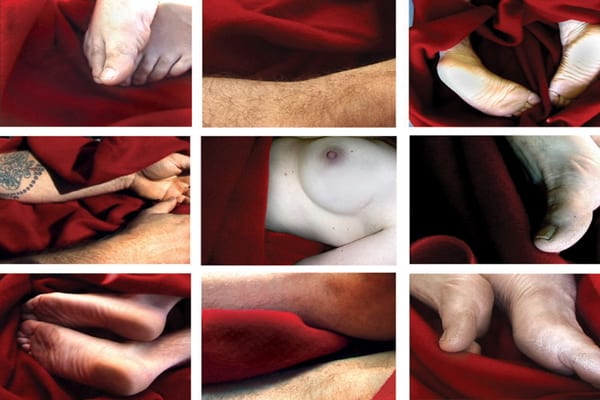
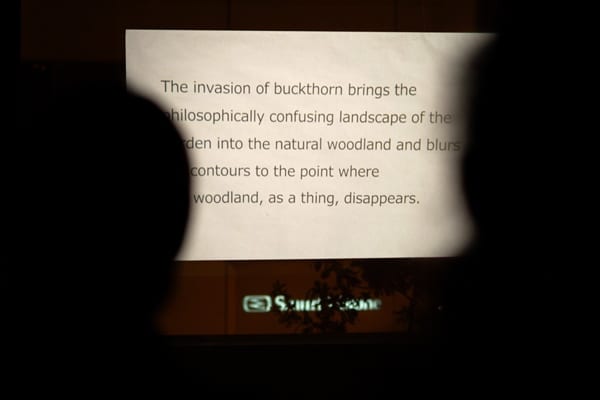
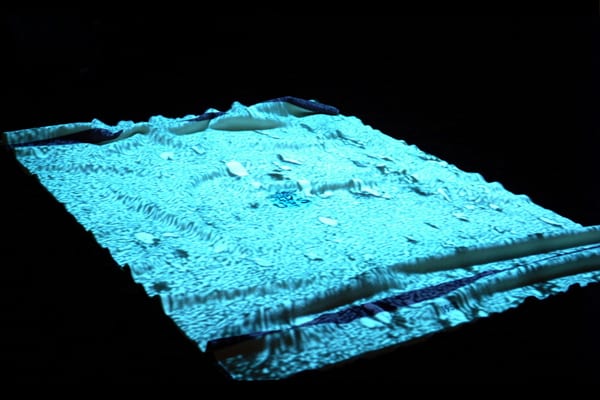
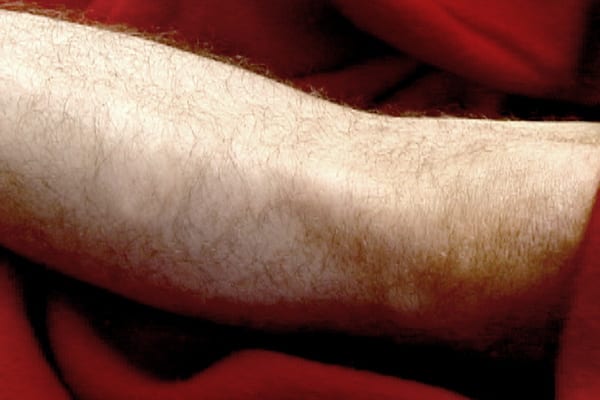
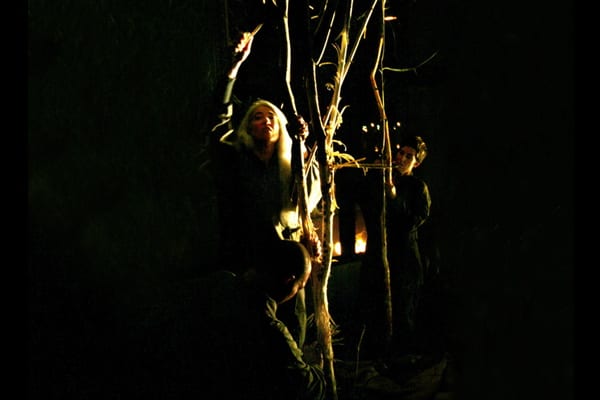
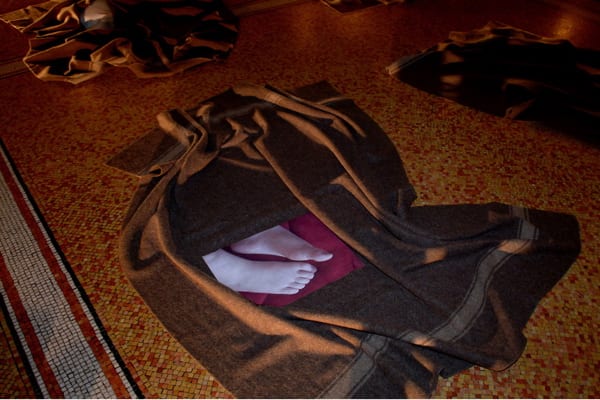
Category
InstallationAbout This Project
For us, art is a way of having a conversation without limiting ourselves to words or language. Words may be necessary but are not always the only or best way to express complicated ideas or feelings or thoughts that defy everyday language and description. Words fail us all the time. Might makes right is an adage that most people would challenge and yet it does so often prevail. God is on our side is invoked by all sides of every debate to bolster whatever opinion or action the speakers wish to uphold. Simply stating the words: fear and violence and loss and dread and shame and mourning and confusion and passivity and tenderness and vulnerability seem wholly inadequate to describe how we feel standing in GAR Hall-The General Army of the Republic Hall-the monument that stands in memory of some of the bloodiest battles of the Civil War of the United States. Monuments are in memory of bravery, untoward and unwanted death and destruction and surround us this Autumn 2004. We are sure to see more to come. We aim to begin our conversation where this Civil War memorial site leaves off.
Forty used wool military blankets, fused with photographs printed on cotton, a pair of trees, the invasive species, buckthorn, with roots intact, occupy Gar Hall and Rotunda. Video and text projections are sited and a field of mechanized blankets is tended while both trees are denuded.
Dolores Wilber and Julie Laffin joined forces to collaborate on this site specific installation/performance for Site Unseen at the Chicago Cultural Center investigating the tenacious relationship between annihilation and preservation.
History of Collaboration:
Wilber and Laffin have had a working dialog since 1992 with Two Men are Dead, presented at Gallery 2. In 1996, they collaborated on, The Red Gown Perpendicular on the Museum of Contemporary Art of Chicago front staircase and plaza. The artists, wearing a two-person red gown with a 75 ft. conjoined train, served as a red carpet for the patrons who readily played their part. Wilber and Laffin sought to claim the public space in a way that raised questions about the museum’s relationship to artists and about the ownership of public space. They aimed to present an arresting red slice of women and dress that would be powerful and disturbing, providing pleasure and contemplation for the public. Their dress collaborations also appeared in various forms at the Lunar Cabaret (1995) and N.A.M.E. Gallery (1996). Both artists work individually and collaboratively.
Photos © Dan Rest
